The Cornell Lab Bird Academy › Discussion Groups › Bird Photography with Melissa Groo › Practice Gaining an Audience with Birds
-
My first sit-try was to hike through the woods last winter to a field and sit at the edge where I could see the edge vegetation, stubble sticking up in the snow, and the lone tree in the open area. There were a few slate-gray juncos, chickadees, titmice and a crow. Just like in my yard. When I checked my location with my phone, I had circled back to about 1/4 mile from my house! As it was the nearest house by far, these birds were not only the same species as those that come to my feeder, but probably the same individual birds! The second try was in March. I set out, and heard frogs croaking. High pitched, but not as high as spring peepers. I made my way over to a small shallow wetland, and found dozens - really!- dozens of freshly emerged male wood frogs, all singing madly, gaining energy to disperse to their own places and find a mate. The third was to perch on the embankment where a rail trail bisected a pond. It was nearly sunset. I photographed a pair of mallards for a while, and then a pair of mergansers swam into view. Distant, but nice.



-
I'm on vacation this week in New Orleans and had the opportunity to try both a sit spot and car blind. I caught a Blue Bird from my car. I was surprised at how easy it was to just sit and watch what happened from the sit spot I chose in Audubon Park in New Orleans. I selected the spot when I saw a wood duck and her juvenile. Lots of birds and ducks came by. In the end, I got to see these Black Bellied Whistling Ducks, which I was really hoping to see while I was here.

-
For this assignment I went to my favorite spot in Prospect Park, Brooklyn NY, along a small stream that flows through a wooded, shallow ravine just below a small waterfall and bridge. This is a hotspot during migrations but quieter at other times. I go by there almost everyday but haven't been staying long lately. I decided to spend a half hour no matter to see what might come my way. I had heard there was a pair of acadian flycatchers (rare in our area) nesting nearby. I was very excited to ID one by its song and then later see it. I didn't get a photo because it was all too quick and in poor lighting, but I was happy that my patience paid off with my first sighting of that species. I also saw a tufted titmouse, 2 male mallards, and a catbird which is one of my favorites.

-
I sat on my back patio with my camera in a tripod aimed at the fountain that draws many birds to my yard. It was late in the day so business was slow but I did get a few photos of lesser goldfinches. I was not crazy about the wiggliness of the camera in the tripod (an old one given to me)... may try another borrowed one next. Have never gotten the water spray in earlier photos so the stabilization must have helped with that.

-
I tried a sit spot and found that it is not easy for me to sit in one spot for half an hour. But patience was rewarded; a northern cardinal set down and started singing close to where I was sitting. Also watched my feeders for a while to see where birds sat down prior to going to the feeders. Have a mulberry close by that they use, but the specific spot they landed seemed to differ each time - making it tough to anticipate their landing. Was more successful in predicting where they took off to, at least for a red-bellied woodpecker that picked a sunflower seed from the feeder and set down in the same spot on a dead branch of a nearby live oak each time to open the seed. Was able to get his picture on one occasion.

-
 There is a Boardwalk in the Loch in Central Park, NY, where if you are patient, birds will often come to you. This Red-bellied Woodpecker is a frequent visitor to this spot.
There is a Boardwalk in the Loch in Central Park, NY, where if you are patient, birds will often come to you. This Red-bellied Woodpecker is a frequent visitor to this spot. -
My first spot I stayed for 15 minutes and only heard a blue jay and saw no birds. My next spot as I drove up I saw baby Canada geese. I used my car as a blind spot. Saw a few other common birds. It was difficult to just wait. Less coffee needed
-
I respectfully got close to a Female Cardinal but still kept my distance so as not to scare her away or cause distress. I was at a local park where during the winter my mother and I feed birds. My patience and respect brought the bird a little bit closer along with some seed on the ground.

-
I'm sharing one of my favorite photos from my sit spot for Project Feeder Watch. It's not the most artistic, but it's the one I'm most excited about because it was the day nine Baltimore Orioles came to my bird feeding area - as well as a pair of Rose-breasted Grosbeaks! I was able to get three orioles in the foreground of this photo and the pair of grosbeaks in the hopper feeder further away. I've decorated all the shepherd's hooks that hold the feeders with red ribbons and placed large fake red flowers out in the garden to attract hummingbirds. With all the orioles I attracted, it seems likely they're attracted to red as well as orange! There is a large Flowering Quince nearby, which has been covered with orange-pink flowers. It's beautiful and much loved by all the birds for its shelter as well as its nectar. The Flowering Quince should be a great photo op and that will be one of my goals for the future. I also chose this spot as as sit spot because it is very near the large native prairie garden that I created - which borders a neighbors' wooded back yard. I put some feeders between the woods and the prairie and others between me and the prairie. While the woods is mostly deciduous, I have a stand of very large White Pines bordering the neighbor's woods. My sit spot is indoors and I watch birds from a window. Most birds don't notice me, but the feeder right in front of the window attracts finches and wrens who are scared by any movement. I will buy the camouflage drape that Melissa recommended to cover myself up when I sit there from now on. I've greatly enjoyed watching birds in this sit spot and look forward to taking better photos in the future with all the ideas and knowledge from this class!

-
Fui a un cuerpo de agua cercano a casa, espere 40 minutos sentada entre arboles, pude ver una parvada de garzas blancas(Ardea alba) refrescandose en medio del rio. Minutos mas tarde se acerco un papamoscas ( pyrocephalus rubinus) y pude apreciar su hermoso plumaje color rojo y asi otras especies, una experiencia hermosa.
-
I found a Red-breasted Nuthatch flies to the base of the tree and works up the trunk. It seemed to forage on one particular tree the most.
-
My husband and I sat for a bit over a half hour at Greenlawn Cemetery in Columbus, Ohio. There's a place there with several birdfeeders so we brought our chairs and camped out nearby. We watched many birds come to the feeders. There were many Red-winged Blackbirds that have been arriving over the past two weeks. All the birds would suddenly scatter though when a Cooper's Hawk flew by. This happened twice while we were there. It took several minutes after the hawk gave up before they would return to the feeders. Afterwards, we went to another location, the OSU Wetlands, to check it out for later this spring. We saw a Bufflehead duck. Below are three photos from yesterday - a Pine Warbler at the feeder, the Cooper's Hawk, who was scaring all the other birds, and the Bufflehead.



-
For my sit spot I went to a ditch that runs next to/behind my neighborhood, where I have previously seen multiple birds including a Great Blue Heron. I sat on the ground next to the ditch, near an orange tree where I saw some kind of warbler as I walked up. The birds made themselves very scarce at first and were not willing to come close enough for me get a picture. After about 30 to 40 minutes the birds started to get used to me and I had a Northern Mocking Bird come and land on the orange tree. Unfortunately right after this between some barking dogs and a Cooper's Hawk, which I did get some good pics of, I did not have much luck with any other birds.



-
Here in February in Maine sitting for very long outdoors is a challenge so my current sit spot is just outside my door. I sit on a step partially obscured by a corner of the house and have been watching the birds coming to our suet and tube feeders. It's fascinating how most of them scatter, except the red-breasted nuthatches which are pretty cheeky. Patience pays off and the feeding activity resumes. Once you start noticing different behavior patterns it's easy to get hooked! This female downy woodpecker likes to sit on this one branch calmly for a bit between suet snacks. She seems so self possessed and frankly she's easier to capture with the camera because of this but I love the expression here. Her mate comes to the feeder as well but I've yet to see them together. Maybe it's early days in their courtship -- I think I will call her Dreamboat Annie.

-

-
Heron Rockery in Minneapolis, an island in the Mississippi. You must wait patiently for the herons to land and look your way. It was a windy day.
-
-
I observed birds from my home to gain an audience. Pine Siskin and Goldfinch are not too skittish and let me approach carefully and maintain that same distance consistently. They are pretty greedy and found food more important than me. As long as I moved slowly and smoothly, they were fine with my presence.
 Dark-eyed junco were more difficult to gain audience with. I had to be patient and still.
Dark-eyed junco were more difficult to gain audience with. I had to be patient and still. Pileated woodpeckers liked to keep me where they could see me and certainly at a distance.
Pileated woodpeckers liked to keep me where they could see me and certainly at a distance.
-

 Found a good sit spot by accident in Central Park. After I spent about an hour trying to get shots by foot of golden-crowned kinglets, which never sit still, I got tired and sat on a bench across from this pine tree to rest. That's when one of the kinglets came out to just above eye-level and "posed" out in the open for several minutes.
Found a good sit spot by accident in Central Park. After I spent about an hour trying to get shots by foot of golden-crowned kinglets, which never sit still, I got tired and sat on a bench across from this pine tree to rest. That's when one of the kinglets came out to just above eye-level and "posed" out in the open for several minutes. -
I watched this plover for over an hour at a distance. It did not seem nervous that I was there, but it would continue to turn then pose just watching the sunrise. It was still watching the water when I left.

-

-
I found my sit spot on old picnic table at the far corner of our backyard. I can sit there in the morning with the sun at my back and see both of our feeding stations. One morning I was treated to a Tufted Titmouse, Downey Woodpecker, European Starling and a Red-bellied Woodpecker. Karl Media,PA



-

-
 outback I have been observing the woodpeckers that have been arriving at my suet feeder or near the tree next to it that has been dying over the years leaving dead branches which has been a good source of food in the dead wood. also near the suet feeder I have a black oil sunflower feeder that attracts many other birds such as chickadees, nuthatches, 1 Carolina wren, downy woodpeckers, harry woodpecker and a family of pileated woodpeckers, juncos and titmice along with crows and blue jays.
outback I have been observing the woodpeckers that have been arriving at my suet feeder or near the tree next to it that has been dying over the years leaving dead branches which has been a good source of food in the dead wood. also near the suet feeder I have a black oil sunflower feeder that attracts many other birds such as chickadees, nuthatches, 1 Carolina wren, downy woodpeckers, harry woodpecker and a family of pileated woodpeckers, juncos and titmice along with crows and blue jays. -
Just outside our dining room, we have set up the birds' dining area. Hanging from an ornamental pear (yeah, garbage invasive, I know-- but too big and too important to remove now) we have a Nyjer tube, a seed tube and two different suet cages. One suet cage hangs at 5 feet level and another is on a short ground stake near the azaleas along the house. Different birds seem to prefer each location. Just two days ago, I had 9 species taking turns: red bellied woodpecker, downy woodpecker, Carolina wren, black capped chickadee, house finch, gold finch, house sparrow, white throated sparrow, and mourning doves. Each has its own place in the pecking order (literally) and its own location. Heck, they even get along with the squirrels who hang out. On other days, we also get cardinals, starlings, grackles, juncos, nuthatches and titmice (?).

-



-
Ian - these are not birds I see in southern California. Can you identify them for us? Dana
-
-
 Sometimes birds unexpectedly come to you. I was on a camping trip in Northern Minnesota and this Northern Parula decided he had an invader in his territory. I had never heard of this warbler before and it was not listed in my old birding guide. Saved by the internet where I found it. I still have a lot to learn.
Sometimes birds unexpectedly come to you. I was on a camping trip in Northern Minnesota and this Northern Parula decided he had an invader in his territory. I had never heard of this warbler before and it was not listed in my old birding guide. Saved by the internet where I found it. I still have a lot to learn. -
Perfect timing and angle for his double portrait in the mirror. That's a day's reward in itself.
-
Read More:
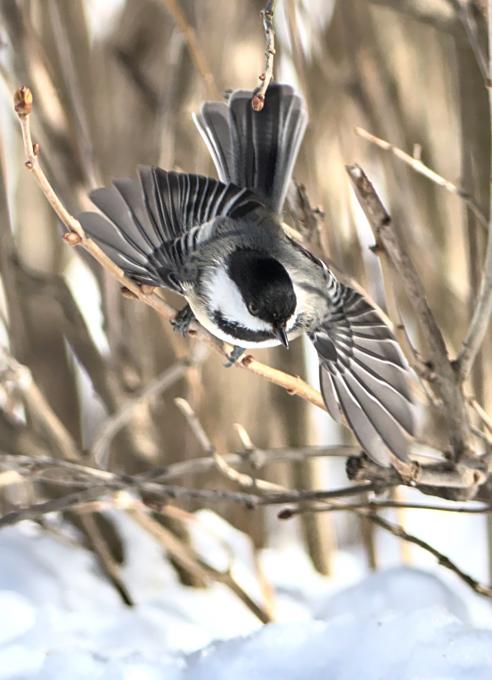
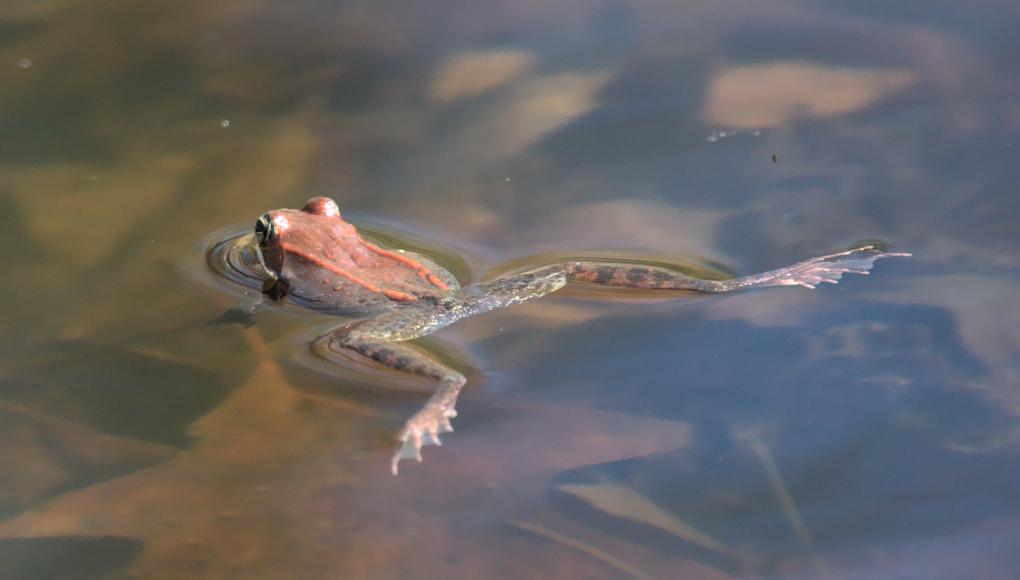





 There is a Boardwalk in the Loch in Central Park, NY, where if you are patient, birds will often come to you. This Red-bellied Woodpecker is a frequent visitor to this spot.
There is a Boardwalk in the Loch in Central Park, NY, where if you are patient, birds will often come to you. This Red-bellied Woodpecker is a frequent visitor to this spot. 
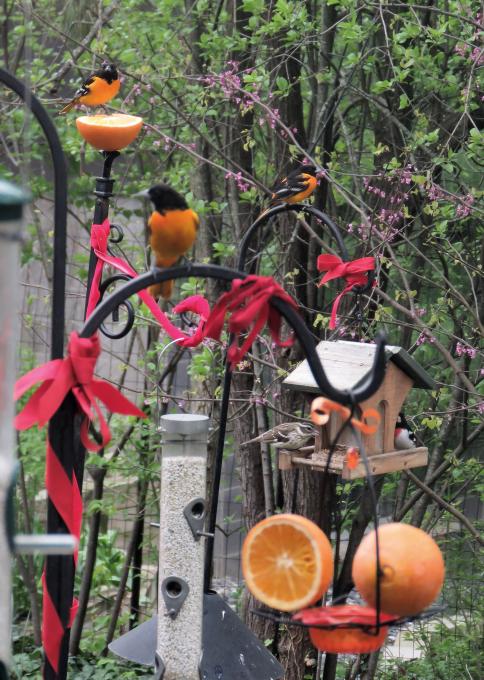


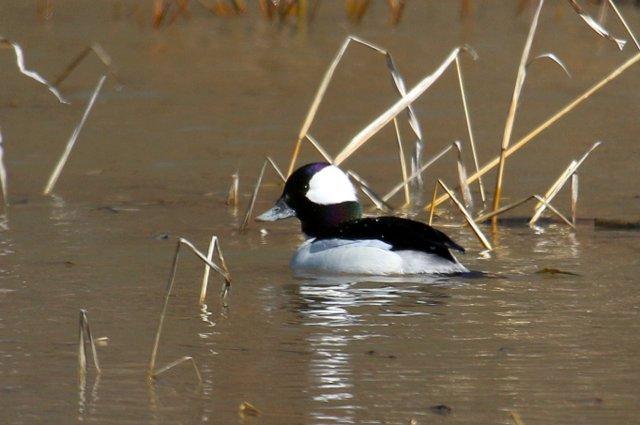
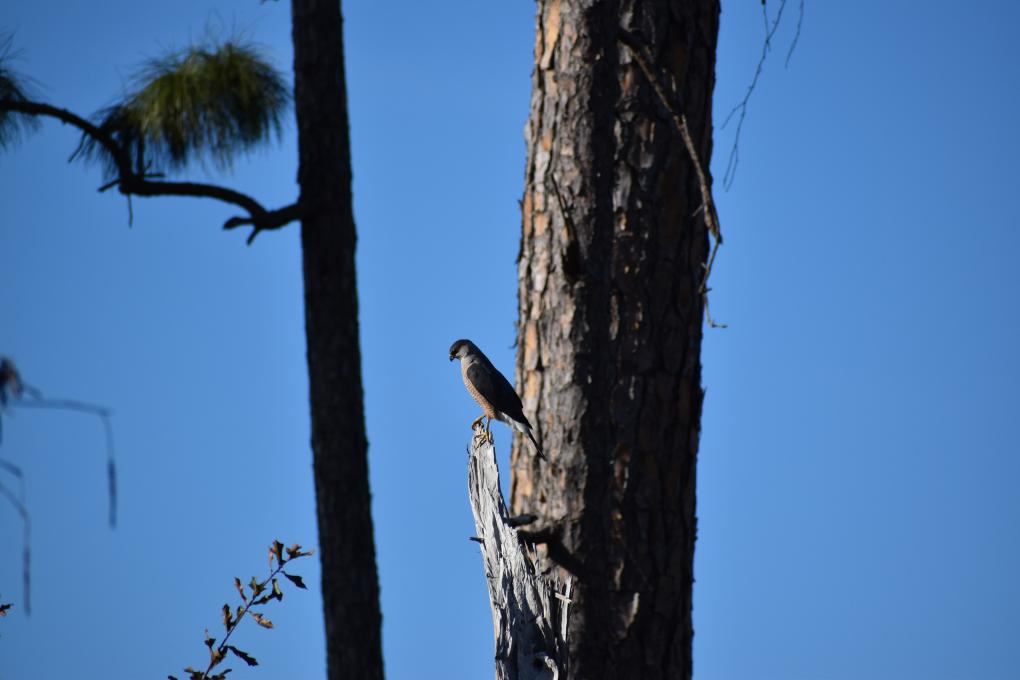


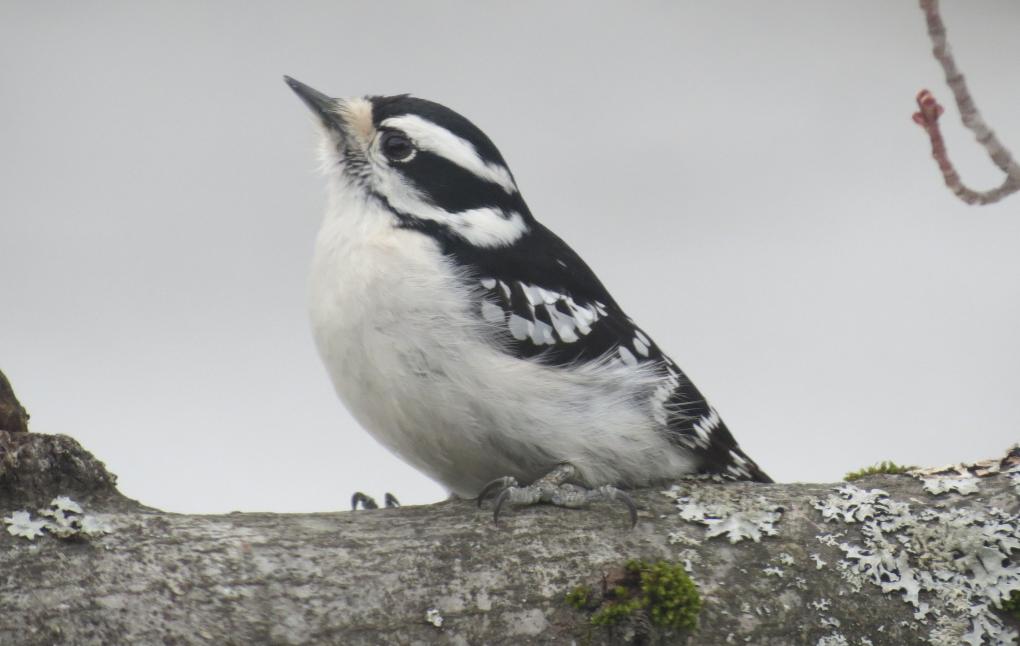

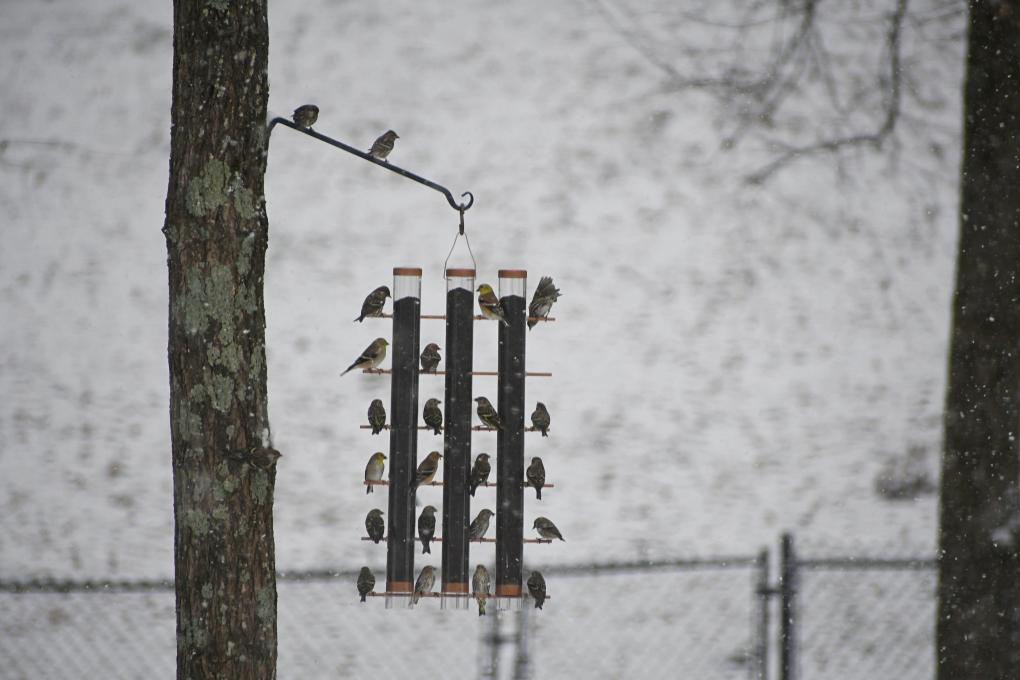 Dark-eyed junco were more difficult to gain audience with. I had to be patient and still.
Dark-eyed junco were more difficult to gain audience with. I had to be patient and still.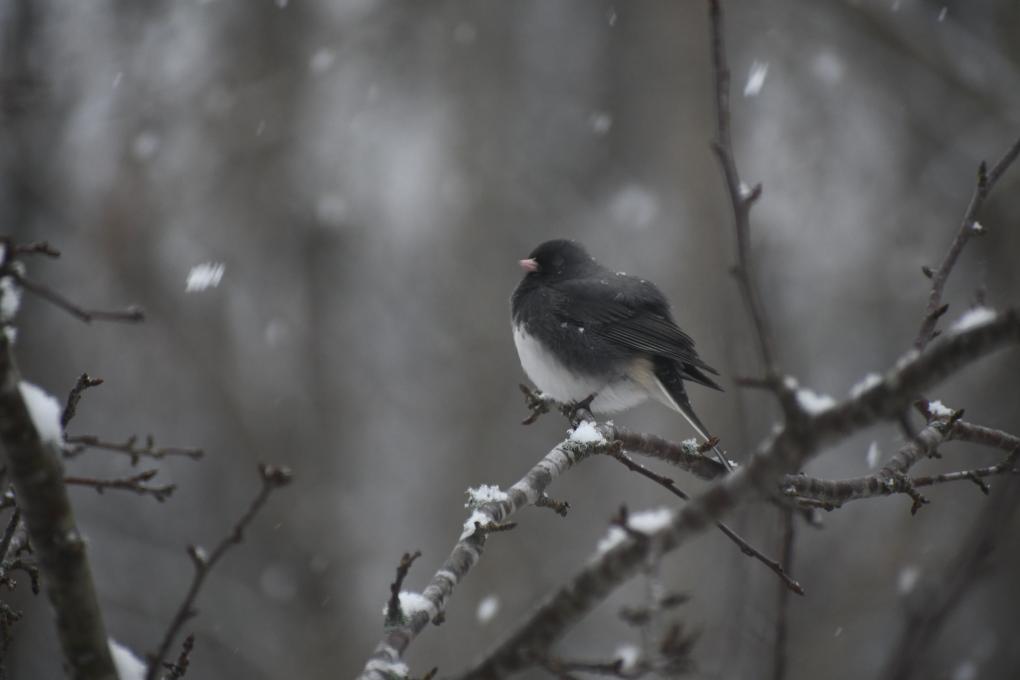 Pileated woodpeckers liked to keep me where they could see me and certainly at a distance.
Pileated woodpeckers liked to keep me where they could see me and certainly at a distance.
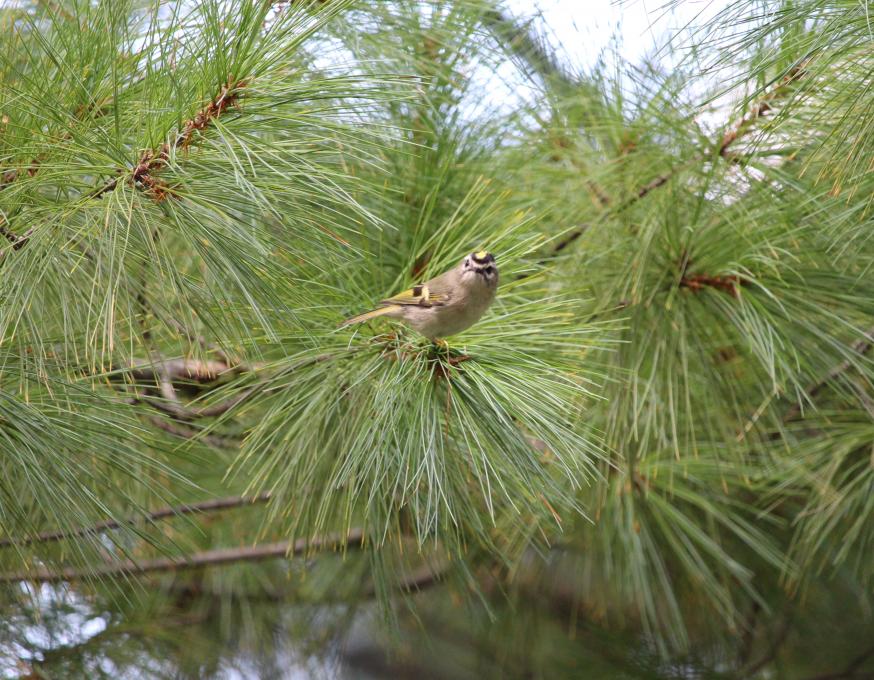
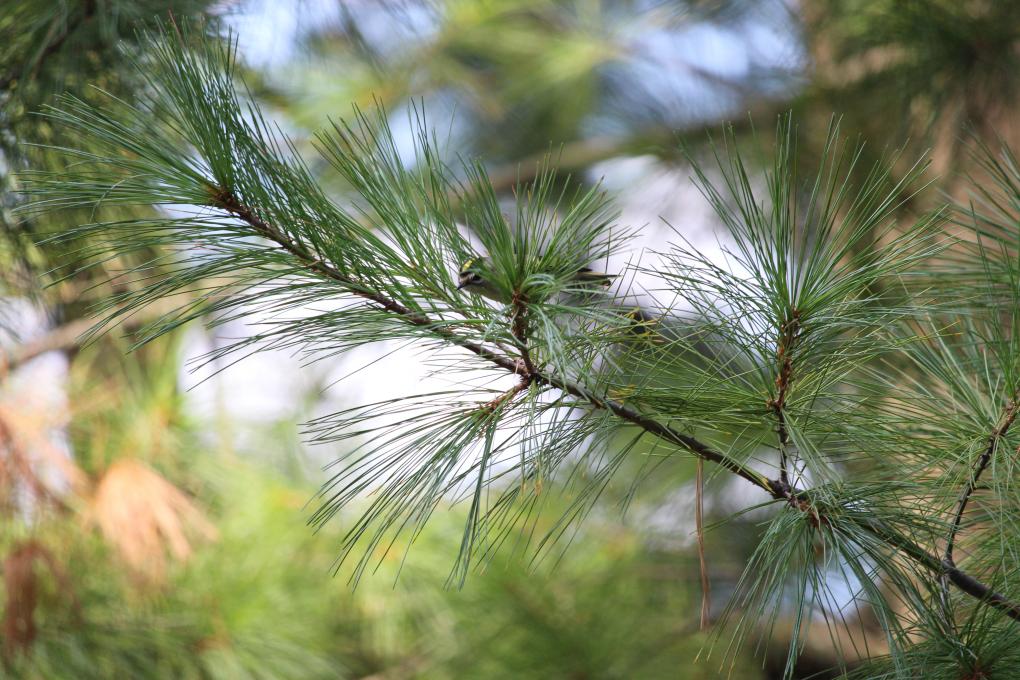 Found a good sit spot by accident in Central Park. After I spent about an hour trying to get shots by foot of golden-crowned kinglets, which never sit still, I got tired and sat on a bench across from this pine tree to rest. That's when one of the kinglets came out to just above eye-level and "posed" out in the open for several minutes.
Found a good sit spot by accident in Central Park. After I spent about an hour trying to get shots by foot of golden-crowned kinglets, which never sit still, I got tired and sat on a bench across from this pine tree to rest. That's when one of the kinglets came out to just above eye-level and "posed" out in the open for several minutes. 

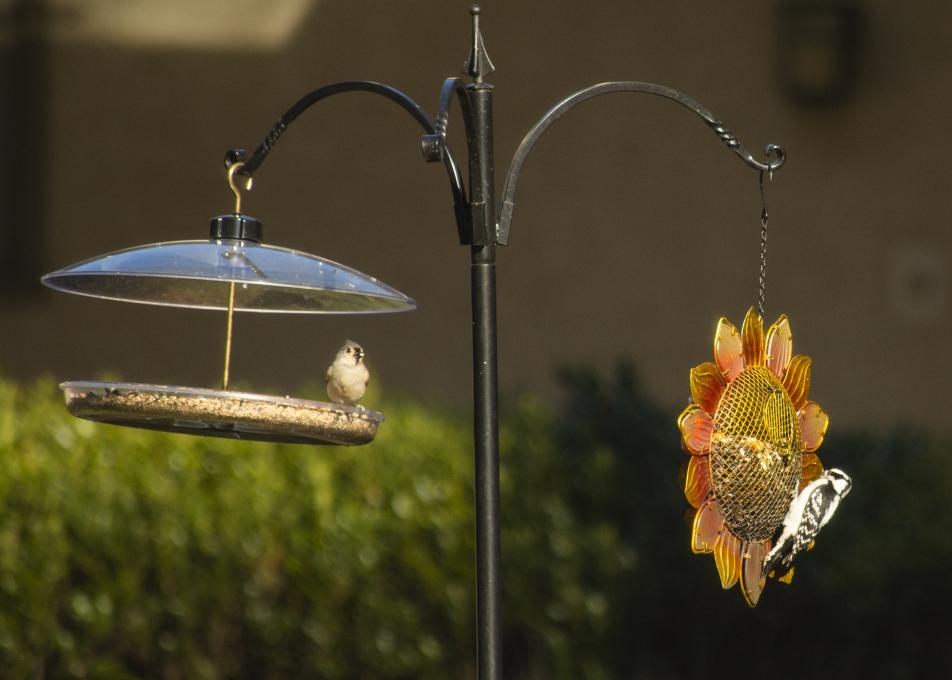
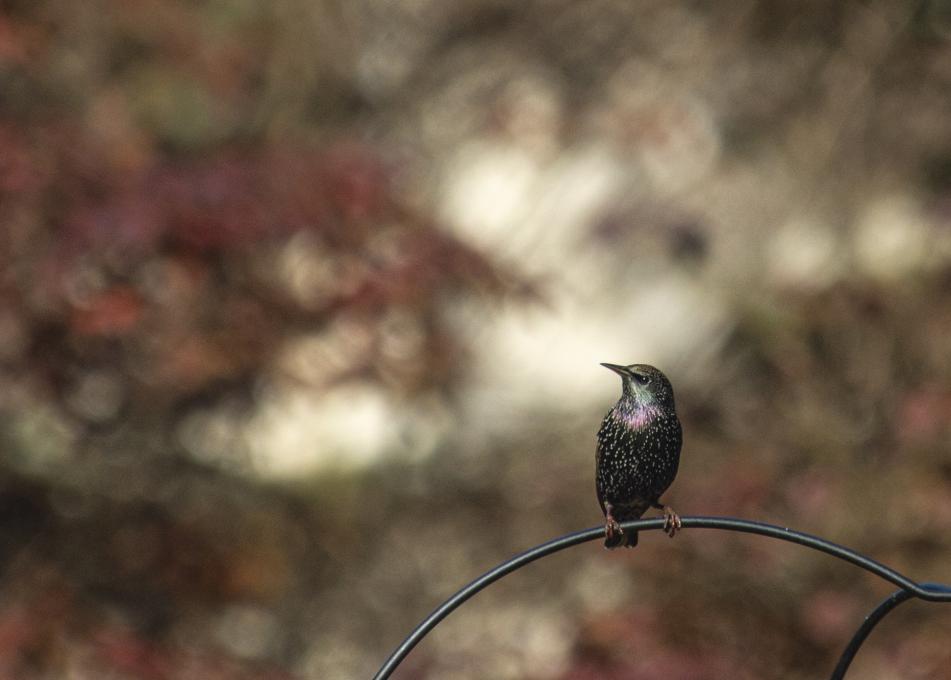

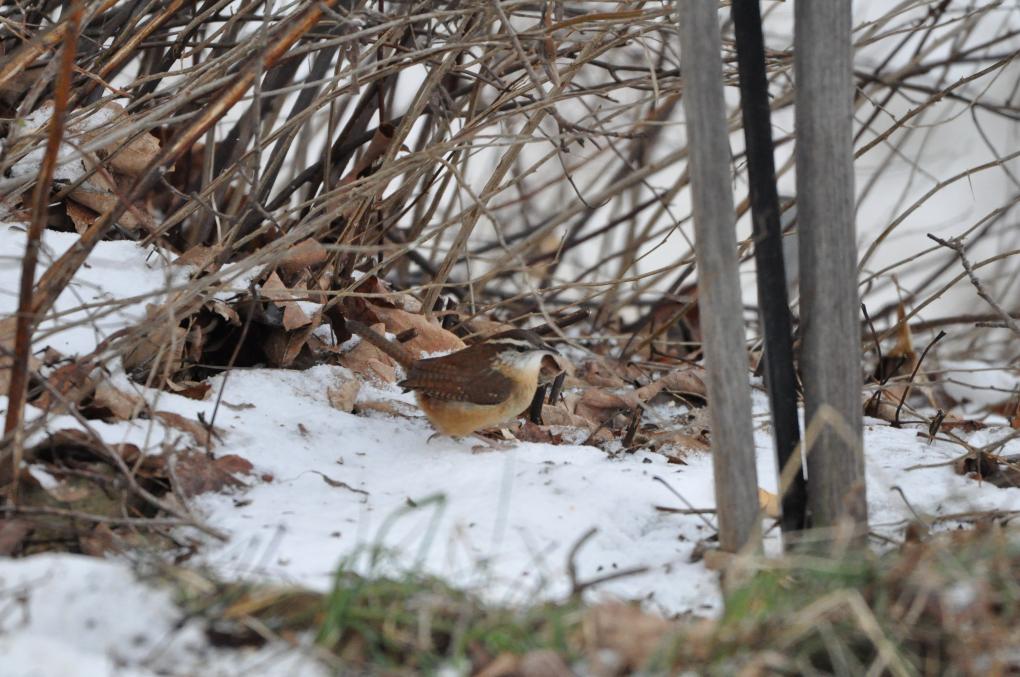
 outback I have been observing the woodpeckers that have been arriving at my suet feeder or near the tree next to it that has been dying over the years leaving dead branches which has been a good source of food in the dead wood. also near the suet feeder I have a black oil sunflower feeder that attracts many other birds such as chickadees, nuthatches, 1 Carolina wren, downy woodpeckers, harry woodpecker and a family of pileated woodpeckers, juncos and titmice along with crows and blue jays.
outback I have been observing the woodpeckers that have been arriving at my suet feeder or near the tree next to it that has been dying over the years leaving dead branches which has been a good source of food in the dead wood. also near the suet feeder I have a black oil sunflower feeder that attracts many other birds such as chickadees, nuthatches, 1 Carolina wren, downy woodpeckers, harry woodpecker and a family of pileated woodpeckers, juncos and titmice along with crows and blue jays. 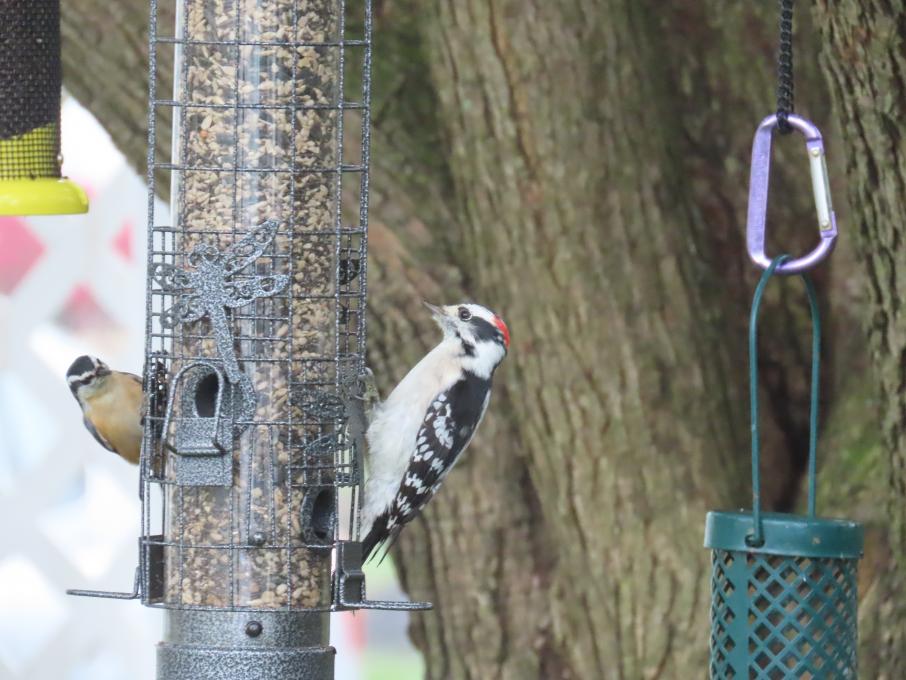
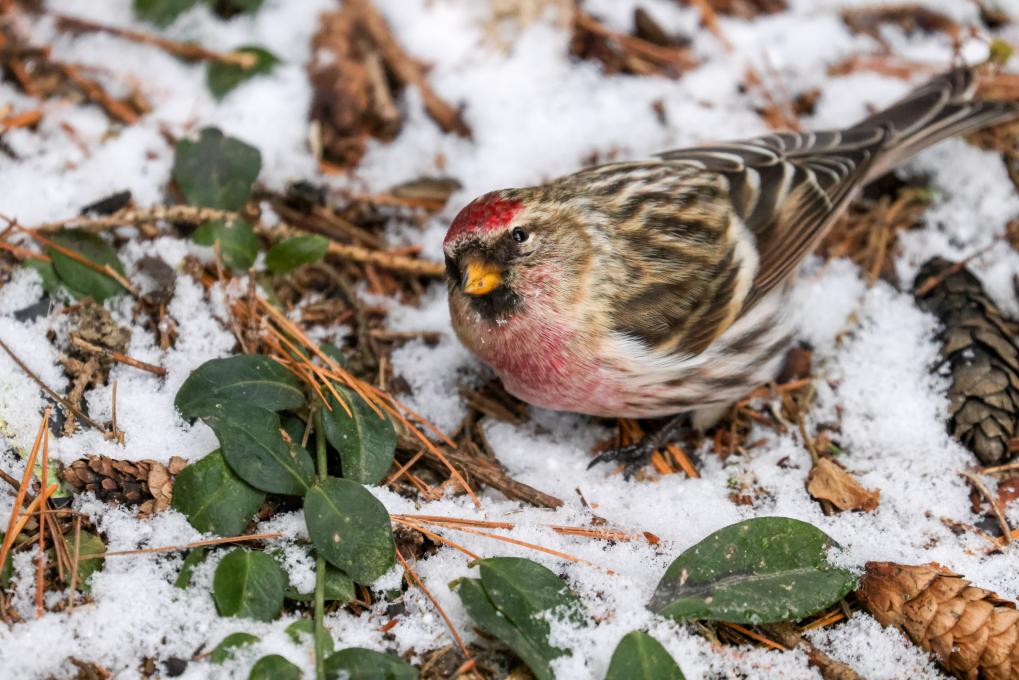
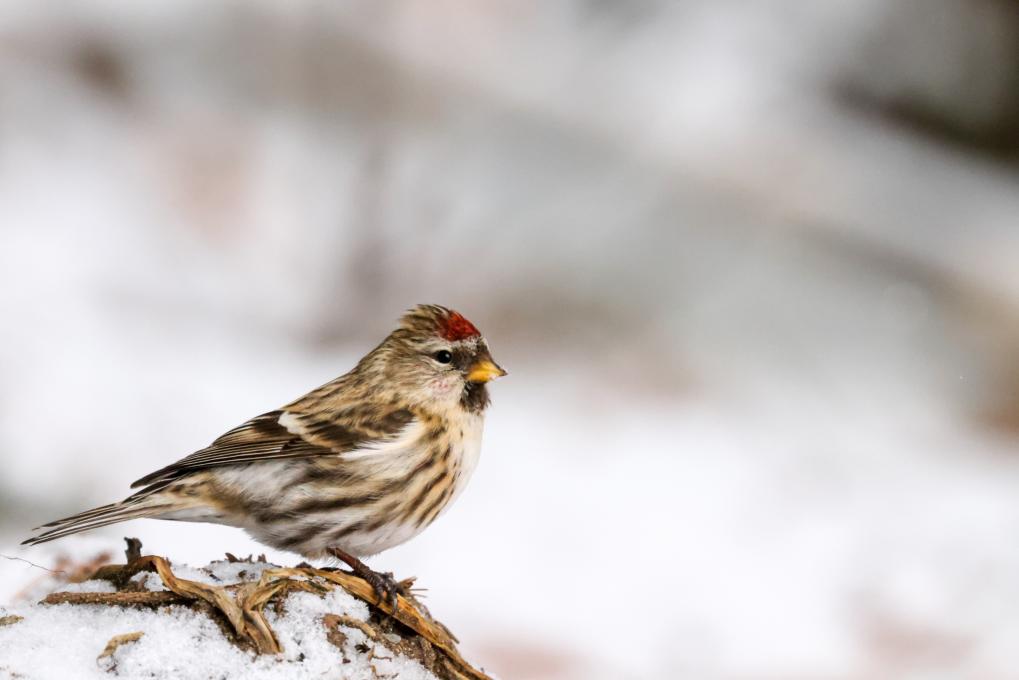
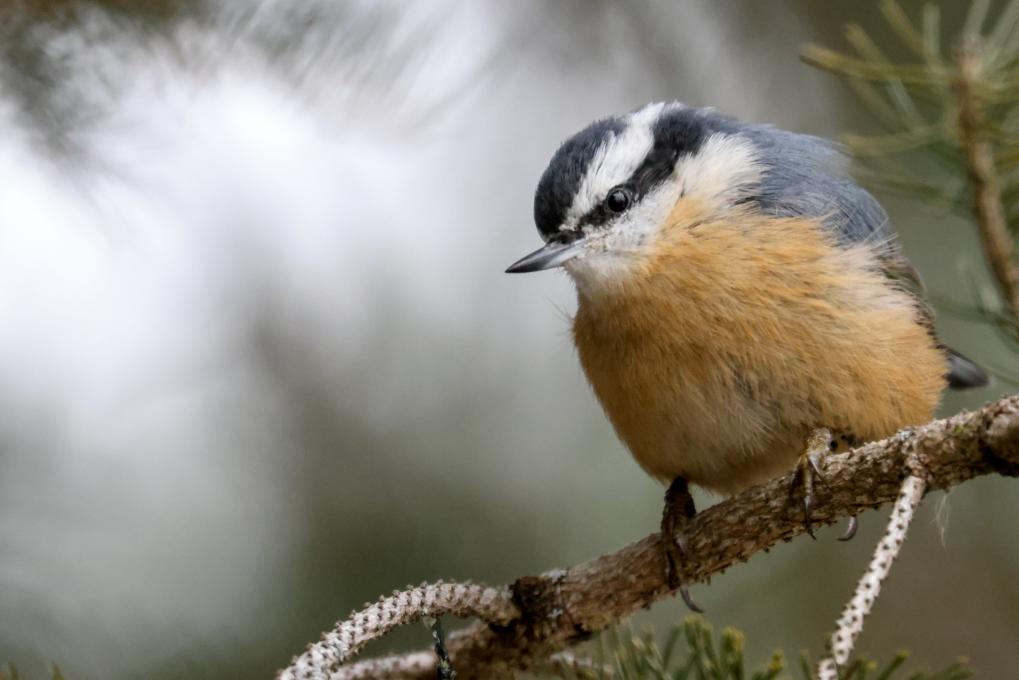
 Sometimes birds unexpectedly come to you. I was on a camping trip in Northern Minnesota and this Northern Parula decided he had an invader in his territory. I had never heard of this warbler before and it was not listed in my old birding guide. Saved by the internet where I found it. I still have a lot to learn.
Sometimes birds unexpectedly come to you. I was on a camping trip in Northern Minnesota and this Northern Parula decided he had an invader in his territory. I had never heard of this warbler before and it was not listed in my old birding guide. Saved by the internet where I found it. I still have a lot to learn.